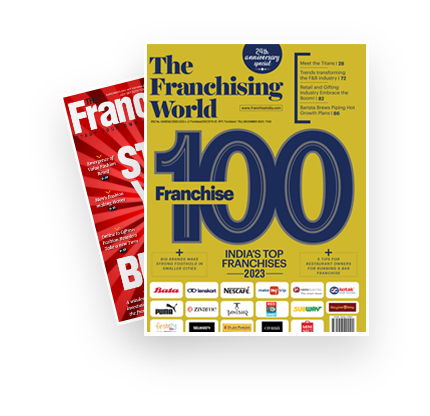
India’s footwear industry in 2026 presents a dynamic mix of high growth, evolving consumer preferences, and strong manufacturing potential, making it an exciting space for entrepreneurs. Valued at around ₹1.5–2 lakh crore and projected to grow at a CAGR of 8–10%, the market is being driven by rising incomes, fashion awareness, digital retail, and increased demand for comfort-oriented and sustainable shoes. Whether it’s launching a D2C sneaker brand, setting up a franchise or retail outlet, building a small-scale manufacturing unit, or innovating with eco-friendly or smart footwear, every segment has room for profitable, differentiated ventures. The key is to focus on customer experience, quality, and innovation—blending design with utility and ensuring a strong digital and retail presence.
This article contains the top 15 footwear businesses, covering a wide spectrum from sneaker brands, multi-brand retail stores, and footwear franchises to handcrafted leather lines, orthopedic footwear, and smart wearable shoes. Investment levels range from ₹50,000 for small repair or customization ventures to ₹5 crore+ for manufacturing or tech-based enterprises, with profit margins typically between 20–60%. Read this article till the end to know your great fit.
Also like: 15 Profitable FOCO Model Businesses in India
Why 2026 is a great time
- Global and domestic players are localizing production—brands like ASICS and Decathlon have announced scale-ups in India, signalling easier supply chains and manufacturer partnerships for new businesses. That’s an advantage for manufacturers, exporters, and brands wanting shorter lead times.
- Franchise and retail remain strong entry routes for entrepreneurs who prefer brand support and a proven model—franchise fees and shopfit budgets vary, but many footwear franchises list total initial costs in the ₹8–25 lakh band for a single outlet (depending on brand, store size, and location).
1) D2C branded footwear

A D2C footwear brand is a great way to tap into India’s booming online fashion scene. The market’s growing fast—about 10–12% a year—thanks to young, digital-first shoppers. Here, you create your own line of men’s or women’s casual shoes or sneakers. You handle the design, get the shoes made by a third party, and focus hard on digital marketing. The main crowd? Urban folks between 18 and 40 who want both style and comfort.
You can start small with about ₹5 lakh—maybe just a basic site and small pre-order runs—or go big, investing up to ₹60 lakh for 1,000–3,000 pairs, professional photos, solid packaging, logistics, and online ads. Gross margins run high, somewhere between 40–60%. A smartly positioned micro-brand can pull in ₹10–60 lakh in the first year. If you keep at it and scale, you can hit crores by year three or four. Nailing unique designs, sizing, influencer partnerships, and a smooth customer experience really drives growth and keeps people coming back.
2) Multi-brand footwear retail store
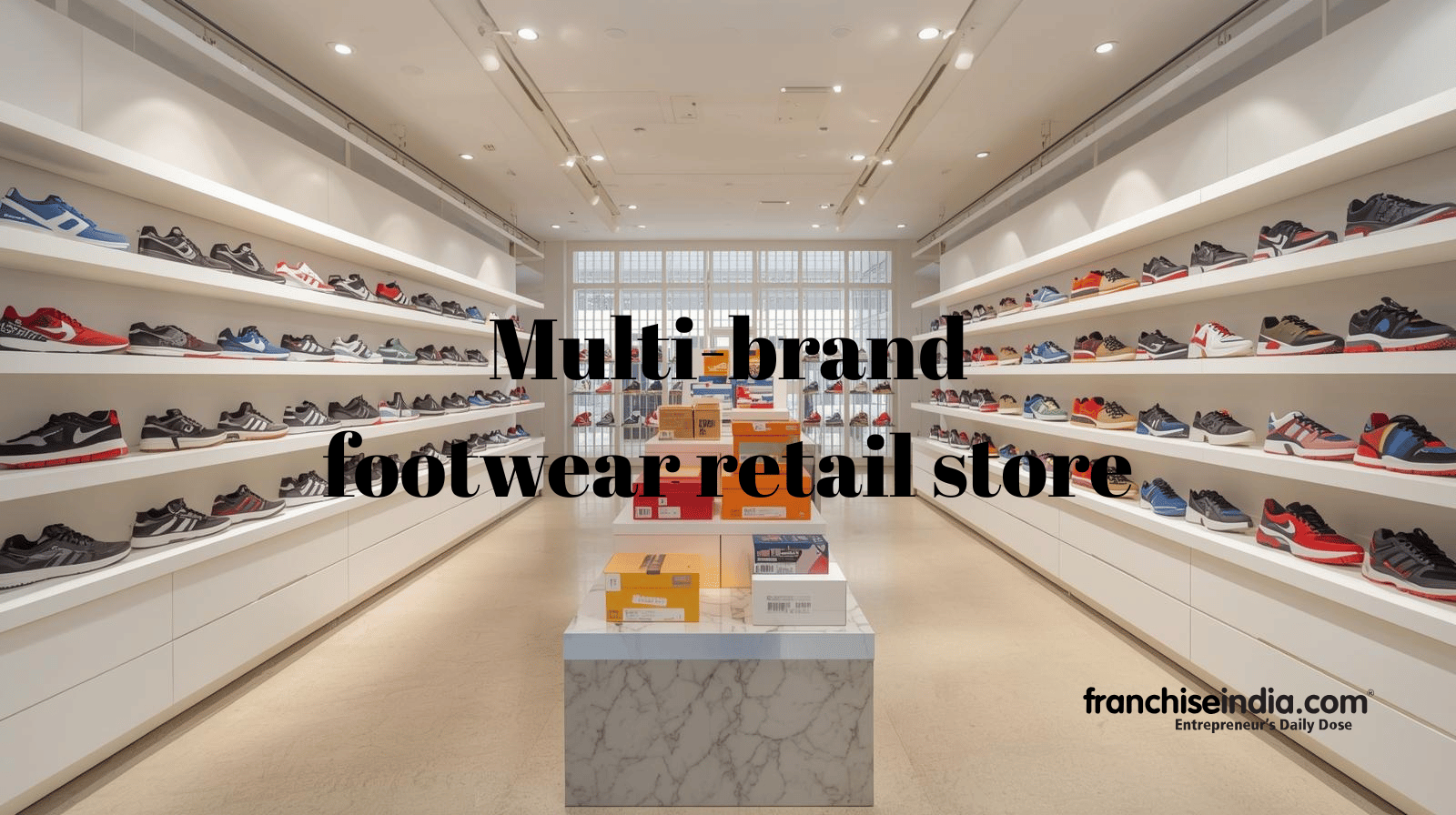
If you’re more into the idea of a physical store, a multi-brand footwear retail shop is still a solid bet. People in India love to try on shoes before they buy, and the market’s growing at about 8–10% a year. You’ll need a brick-and-mortar spot that shows off several local and national brands, attracting everyone from families and office workers to students.
Setting up shop takes anywhere from ₹10 lakh to ₹60 lakh, depending on the size—think 500 to 1,200 square feet, with costs covering the interiors, inventory, and deposits. If you go the franchise route, mid-sized outlets usually need ₹10–25 lakh, including fitouts and brand fees. Retail margins are a bit lower, between 20–40%, but if you land in a busy area, you can make ₹20 lakh to ₹2 crore annually in the first couple of years. The key? Pick the right location, stock a good mix, hire great sales staff, and make sure you’re blending online and offline sales to keep the crowds coming back.
3) Footwear franchise
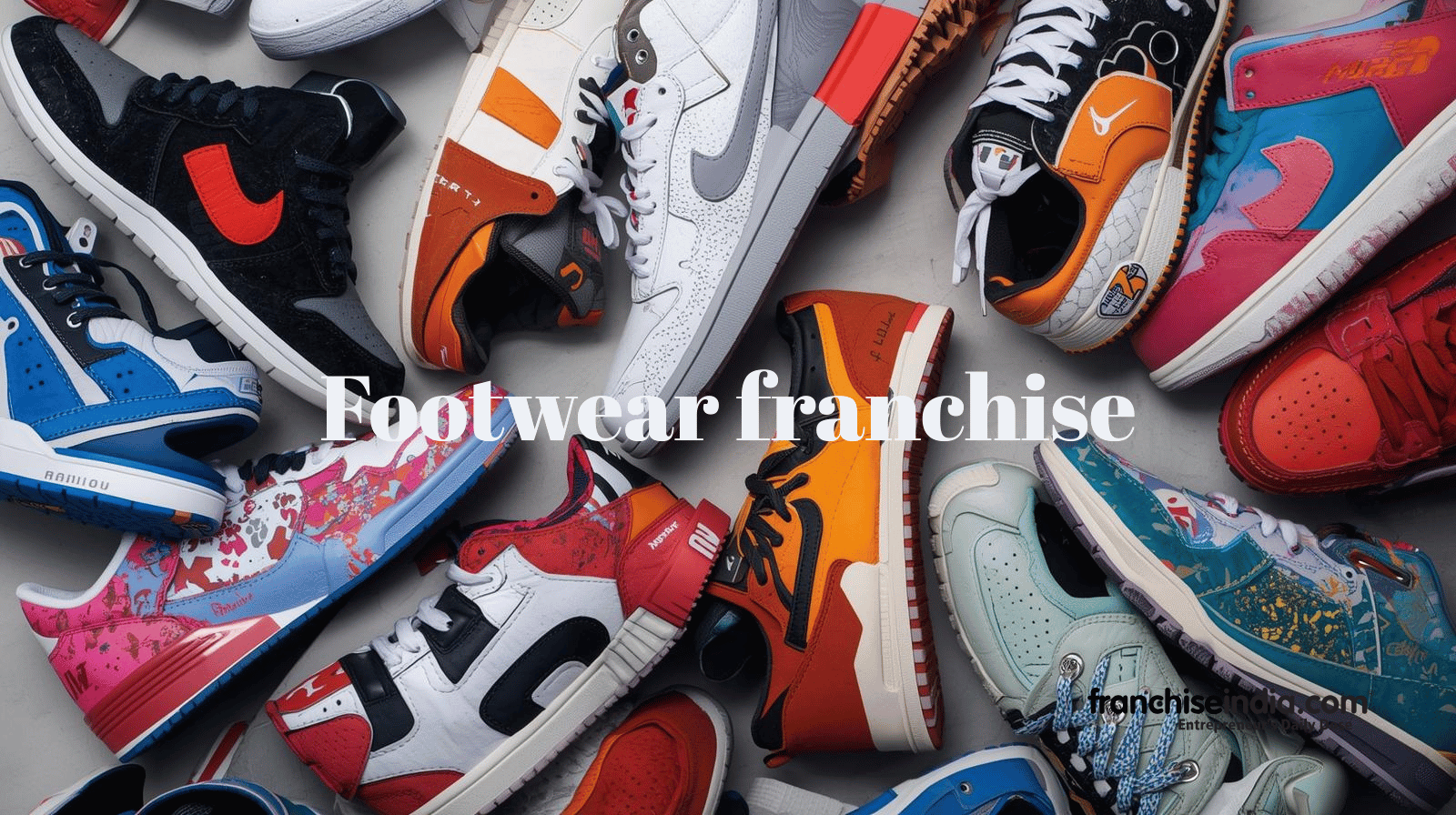
Starting a footwear franchise is ideal if you want less risk and the power of a big brand behind you. India’s footwear market just keeps climbing, and brands like Bata, Liberty, Campus, and Metro are always in demand. The franchise model lets you use their supply chains, marketing, and product lineup, so you get up and running faster.
You’ll need to invest anywhere from ₹8 lakh to ₹40 lakh, with ₹3–15 lakh going to franchise fees. The rest goes into interiors, fitouts, and initial stock. Margins usually sit around 18–30%, and most franchises break even in 12–30 months, depending on where you set up and how much foot traffic you get. It pays to choose your brand and location wisely, then stick to their standards. Get this right, and you’ll see steady, scalable growth.
4) Small-scale shoe manufacturing unit
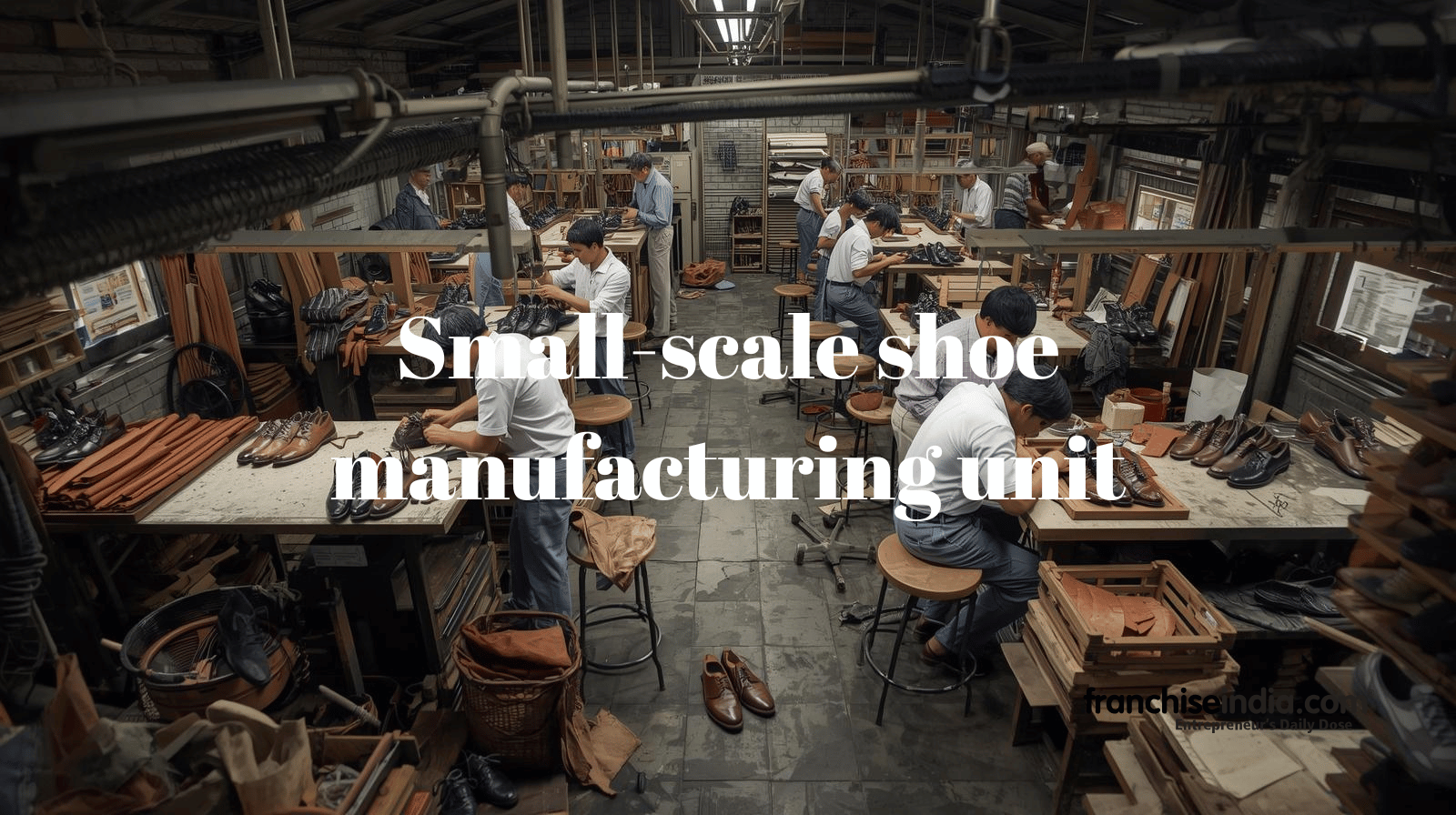
If you want to get into the making side of things, setting up a shoe manufacturing unit packs a lot of potential. The industry’s set to grow 8–10% over the next few years. You can make shoes for other brands (B2B) or sell under your own label, covering everything from leather to canvas or EVA/PU shoes. Your clients are D2C brands, retail stores, and exporters—and India’s manufacturing ecosystem is only getting stronger.
Starting out, you’re looking at ₹25 lakh to over ₹5 crore, depending on how big and automated you want to go. A small unit with 10–30 workers and basic machines might need ₹25–80 lakh. If you want semi-automation and advanced finishing, you’ll need ₹1–5 crore. Numbers-wise, these factories generate ₹50 lakh to ₹5 crore a year, with margins between 10–30%. To keep things running smoothly, focus on quality control, strong vendor ties, timely delivery, and meeting compliance standards. That’s how you build steady profits and scale up.
Also like: Top 15 Trending QSR Business Ideas You Can Start in 2026
5) Niche handcrafted/artisanal leather footwear

Launching a premium handmade footwear brand is a tempting opportunity, especially as more Indian shoppers look for luxury and craftsmanship. The high-end segment is growing at 9–11% a year. This business is all about bespoke leather shoes and unique, handcrafted designs, serving urban professionals, wedding buyers, and people looking for special gifts.
You can start with a small workshop and a lead cobbler for ₹5–12 lakh or go all-in with a branded boutique and an online store for ₹20–40 lakh. Margins are fantastic—50–70%—and handmade pairs sell anywhere from ₹3,000 up to ₹25,000. A well-run boutique can pull in ₹20–80 lakh in a year. The secret? Tell your story, focus on luxury branding, make your designs pop visually, and connect with stylists. That’s how you build a strong name in India’s premium footwear scene.
6) Orthopaedic & medical footwear

Starting an orthopaedic and therapeutic footwear business in India isn’t just niche—it’s catching fire, thanks to more lifestyle-related health problems and an aging population. The market’s growing fast, about 10–12% each year. Here, you’re not making regular shoes. You’re building custom solutions for people with real medical needs: think diabetic foot care, arch support, and posture correction. It’s all about comfort and clinical accuracy. To get going, you’ll need anywhere from ₹8 lakh to ₹60 lakh, covering everything—product research, medical certifications, and partnerships with doctors or physiotherapy centers.
Solid margins, usually 35–55% per unit. You can sell directly to consumers or supply hospitals and clinics, and there’s steady demand on both fronts. Clinical validation, support from podiatrists or orthopedists, and insurance-linked sales make a difference. The tough part is staying compliant with medical standards and handling liability. But with the right certifications and plenty of awareness-building, this business isn’t just profitable—it makes a real difference.
7) Children’s footwear brand
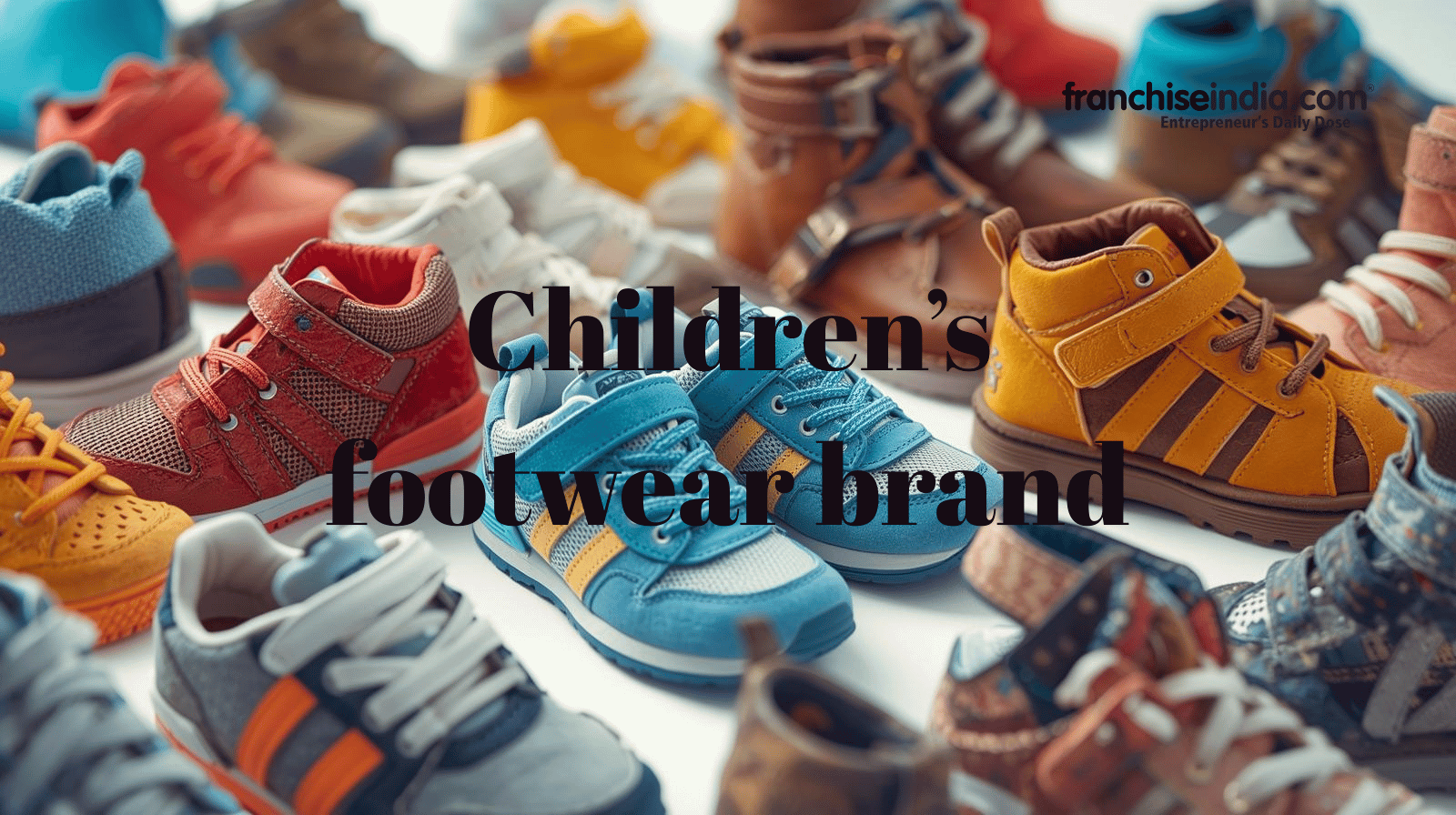
If you’re eyeing the kids’ footwear market, there’s a lot to like. India’s children’s products sector is booming, growing at about 9–11% a year. Parents have more money to spend and want shoes that are safe and comfy. The market covers everything from infants to young kids, and because kids grow fast, shoes need to fit well and be tough enough to survive playground battles—plus, they need replacing often. Starting up takes ₹4 lakh to ₹40 lakh, depending on how big you go, your designs, and how much you pour into marketing.
Margins run from 30–50%, and a sharp D2C brand can rake in ₹20–80 lakh in the first couple of years if you nail your branding and tap the right influencers. Get your safety certifications sorted, design for comfort, partner with schools for uniforms, and maybe offer subscriptions so parents don’t scramble every time their kid’s feet grow. Sure, there are headaches—sizes can be all over the place, and returns happen a lot—but if you build trust, parents stick around.
8) Sports / athleisure footwear

Sneakers and sports shoes are where things get really interesting if you’re after scale and excitement. India’s sneaker market is exploding—about 10–12% growth each year—driven by a new fitness culture and the whole athleisure wave. You’re building for young people, athletes, and fitness lovers. Style matters, but so does performance. Getting started takes more cash—₹15 lakh to ₹5 crore or even higher—since you’ll spend on design, tooling, testing, and serious marketing.
But margins are impressive, 40–55% for brands that get noticed. As local manufacturing grows, the scale potential just keeps rising. To win, you need to prove your shoes perform, link up with sports academies, get endorsements from athletes or influencers, and build a strong presence online and in stores. Global brands are tough competitors, and R&D can get expensive, but if you innovate and carve out a clear identity, you can win big.
9) Sustainable/vegan footwear
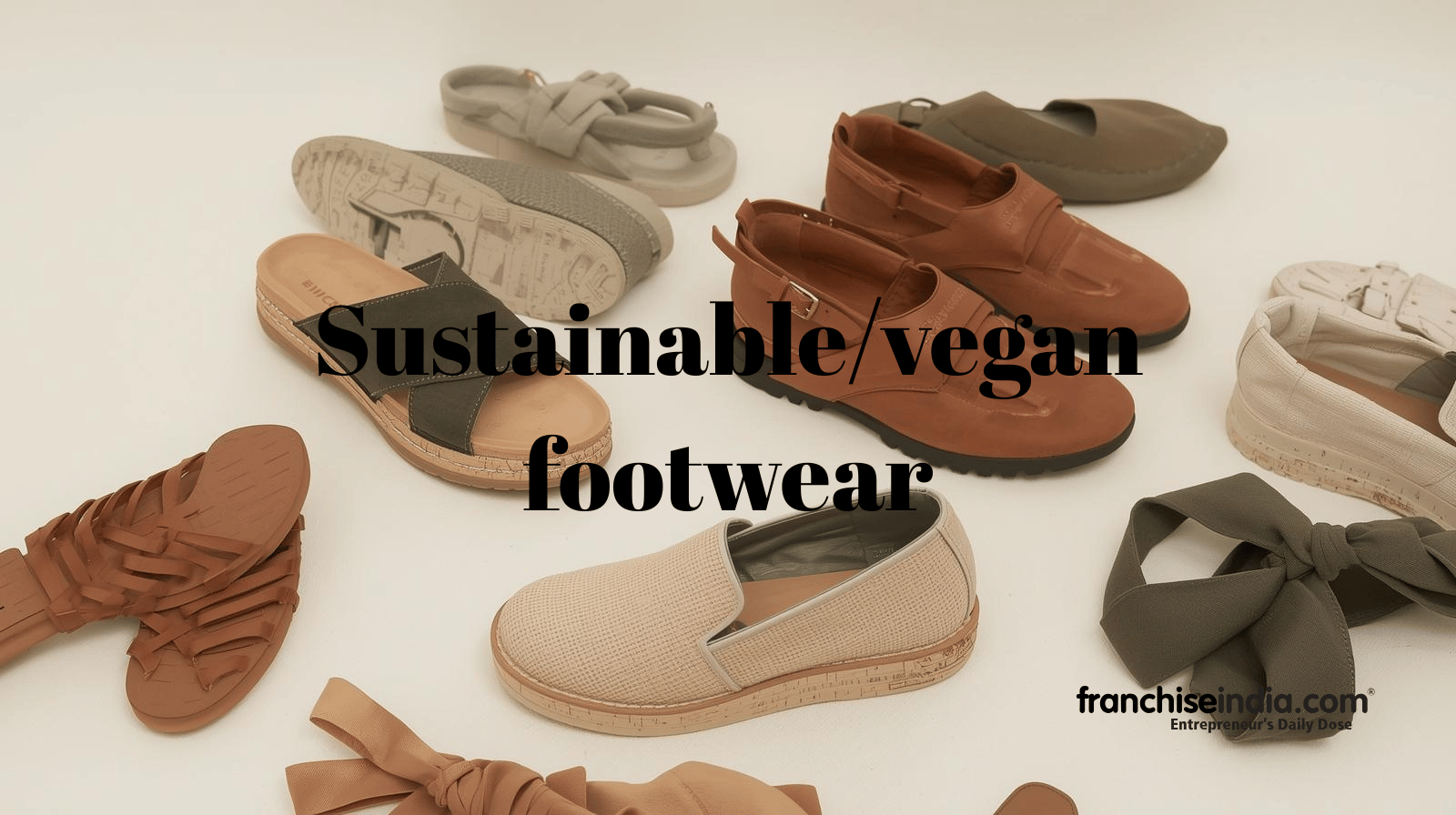
Thinking about sustainability? Launching an eco-friendly footwear brand puts you ahead of the curve. Indian consumers, especially in cities, care more about the environment now, and the eco-footwear market is growing at about 10–13% each year. Here, you’re making shoes from stuff like Piñatex (that’s pineapple leather), recycled plastics, or bio-based PU—perfect for shoppers who want to do good while looking good.
Investment runs from ₹6 lakh to ₹80 lakh, mostly for sourcing sustainable materials, ethical production, and digital marketing to reach the right crowd. Margins are strong—45–65%. To succeed, you need to tell your story well, be transparent about your materials, and back it up with real certifications. Costs run higher, and finding good suppliers isn’t always easy, but if your sustainability claims are solid and your branding is top-notch, you’re set for a business that matters—now and in the years ahead.
10) Shoe repair, refurbishment & sneaker customisation
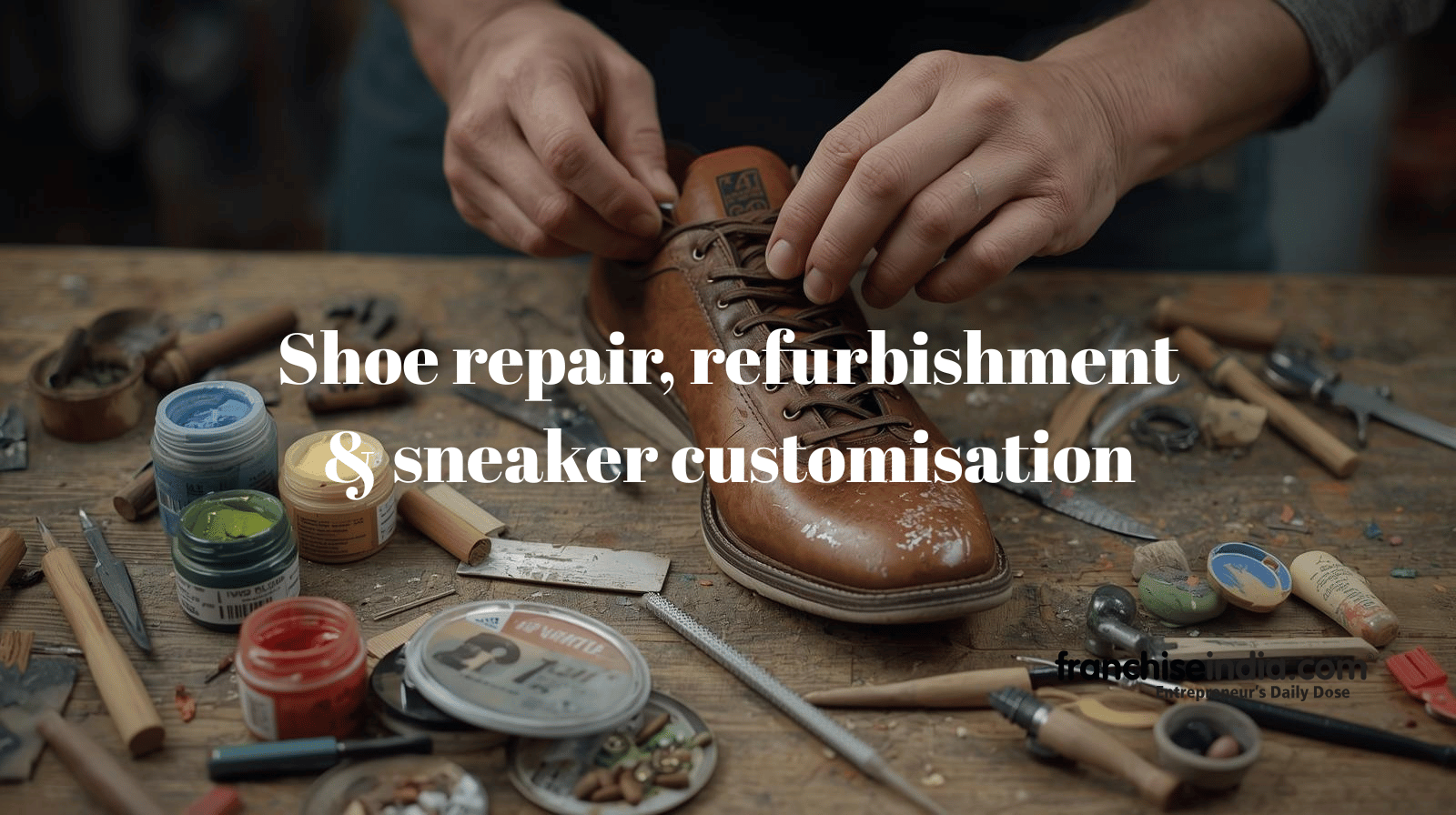
The shoe repair, cleaning, and customization business—probably the most accessible way in. Low investment, high margins, and a market that’s growing as more people want to save money and shop sustainably. This business appeals to bargain-hunters, sneakerheads, and eco-conscious buyers. Services include everything from resoling and deep cleaning to full-on restoration and custom paint jobs.
You can start with as little as ₹50,000 (or go up to ₹8 lakh), covering a workspace, equipment, and skilled staff. Margins can shoot past 60–70%, and with a good location or a smart digital presence, you can pull in ₹5–20 lakh a year without breaking the bank. Although labour availability and local competition are challenges, this model offers strong profitability and sustainability appeal.
Also like: 21 Successful E-commerce Business Ideas in India
11) Footwear export & wholesale trading
.png)
If you’re thinking about getting into the footwear export and wholesale game in India, now’s a smart time. India’s manufacturing scene is booming, and exports are picking up steam—we’re talking annual growth of 8–10%. The idea is pretty straightforward: gather shoes from local manufacturers, then ship them out to global buyers, big retailers, and e-commerce wholesalers. India’s got the edge on costs and cranks out a ton of product, so there’s plenty of room to make this work. You’ll need to invest anywhere from ₹10 lakh to ₹2 crore for things like stocking up inventory, getting those all-important export certifications, and sorting your logistics.
Net margins land somewhere between 10% and 25%, and export contracts usually mean steady, predictable revenue. But here’s the thing—you win if you keep quality high (think BIS standards), run your logistics tight, and build solid relationships with both manufacturers and buyers. Watch out for late payments and shifting trade rules, though. Global retailers are turning to India more than ever, so this space has serious potential, especially for those who know how to organize and scale.
12) Footwear components & accessories manufacturing
.png)
If you’re more into the nuts and bolts of shoes, literally setting up a footwear components manufacturing business is another solid option. India’s shoe supply chain is on the rise, and demand for things like soles, insoles, laces, and eyelets isn’t going anywhere. You’ll mostly be selling B2B—think factories, OEMs, big export houses—which means steady orders and less fuss about brand-building. Starting out takes between ₹8 lakh and ₹5 crore, depending on how big you want to go and what kind of equipment you need.
Margins here look pretty good, usually 20–40%, especially if you get into specialty stuff or technical soles. To really succeed, you’ll need precision tooling, reliable quality checks, and on-time delivery. It’s true—you’ll have to manage upfront costs and keep an eye on raw material prices, but if you lock in long-term contracts with big shoe producers, your revenue stays strong and steady.
13) Footwear subscription/rental
.png)
Footwear rental and subscription is a clever twist on the traditional shoe business. With India’s fashion scene warming up to sharing and sustainability, this market’s growing at about 10–12% a year. There’s a great niche in kids’ shoes too, since kids outgrow them so fast. You’ll need to put in ₹10 lakh to ₹60 lakh to get started—that covers buying inventory, setting up cleaning systems, and sorting logistics.
A rental pool of 500 pairs is enough to pull in steady monthly income, but you’ve got to keep utilization and renewals high to really make money. Hygiene is huge, and people want quick delivery and flexible plans if they’re going to keep coming back. Sure, dealing with wear and tear or tricky logistics can be a pain, but the recurring revenue and sustainability angle make this a pretty forward-thinking play for the next few years.
14) Tech/smart footwear
.png)
The smart wearables market in India is growing fast—around 12–15% every year. This business goes beyond just shoes: you’re building tech that tracks fitness, analyzes gait, detects falls for seniors, and gives athletes performance data, all with smart sensors and IoT. It’s a serious investment, which is anywhere from ₹20 lakh to ₹10 crore or more because you’ll need R&D, sensors, software, and to meet regulatory standards.
Hardware margins are okay, but the real money might come from offering analytics or health insight subscriptions. You’ll need a strong R&D team, super-accurate sensors, and partnerships with sports or healthcare folks. It’s a tough space—tech moves fast, and you’ve got to prove your stuff works—but if you get it right, smart footwear has huge global potential.
Also like: Top 15 MSME Business Ideas In India For 2025-26
15) Marketplace & aggregator for footwear
.png)
There’s the vertical footwear marketplace—basically, building a specialized online platform just for shoes. E-commerce in India is on fire, growing at 11–13% a year. You can go B2B, linking up manufacturers and retailers, or target B2C niches like sneakers, handmade shoes, or orthopedic designs.
It takes an investment of ₹10 lakh to ₹3 crore, covering platform development, onboarding sellers, logistics, and marketing. You’ll make money from commissions, listing fees, ads, and maybe logistics services. A big, varied product catalogue, smooth delivery and returns, and smart product categorization that makes shopping easy. Get those right, and you’re in a great spot to ride the e-commerce wave.
Risks and mitigation
- Commodity inflations (PU, leather, rubber): hedge with longer supplier agreements and diversify raw material sources.
- High customer acquisition costs: focus on retention, referrals, and organic channels (content & social proof).
- Sizing & returns: invest in sizing guides, 3D foot scanners in stores, or fit tech online.
- Regulatory changes for imports/exports: maintain a flexible supply chain and local vendor pool.
- Competition from established global brands: differentiate on niche, speed to market, sustainability, or clinical claims.
Closing note
By 2026, India’s footwear industry looks more exciting than ever. It’s huge—worth somewhere between $18 and $24 billion—and it just keeps growing, thanks to rising incomes, new fashion trends, and a big shift toward comfort and sustainability. People want shoes that look good, feel good, and fit their lifestyles, whether that means eco-friendly materials or smart, tech-enabled features. If you’re an entrepreneur, there’s a wide-open field here.
You could dive into D2C sneaker brands, open a multi-brand retail store, run a franchise, or create your own handcrafted leather line. There’s room for specialized niches too—think orthopedic footwear or even smart wearable shoes. You don’t need a fortune to get started; some small repair or customization shops kick off with just ₹50,000, while bigger manufacturing or tech-driven setups might need upwards of ₹5 crore. India’s consumer base is only getting bigger, exports are on the rise, and there’s plenty of room to mix innovation, skilled craftsmanship, and new technology. If you’re looking for a business with real long-term potential, this is the space to watch.
You might also like: 7 profitable business ideas under INR 5 lakhs

